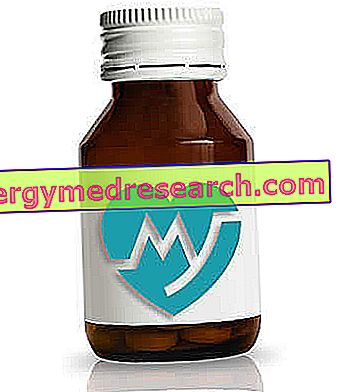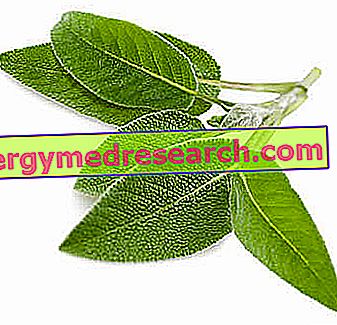Past and present of the clay
Due to its innumerable properties, clay has always captured the attention of cosmetologists, herbalists and doctors. Suffice it to say that in ancient times clay was used in cosmetics for its emulsifying and pseudo-plastic properties: this natural material, with its almost inimitable consistency, proved to be particularly suitable for preparing face masks and wraps.

All the properties listed above are effectively reflected in natural medicine and modern cosmetics.
- The virtues of clay do not simply depend on a single substance, but rather on the interaction of the various elements from which it is composed.
Step back to understand ...
Clay is a natural material, of mineral derivation, composed of a living mixture of aluminum-silicate substances. More precisely, clay is an inexhaustible source of silicon, aluminum, iron, calcium, titanium, sodium, potassium, magnesium and manganese. Based on the concentration of iron and its chemical state, the clay takes on a different shade of color. The most popular types of clay are:
- Green clay: the iron contained in the clay is trivalent
- Red clay: the present iron is bivalent
- White clay: iron is scarcely present
Clay for external use
In dermocosmetics, clays are materials widely used to prepare masks and compresses with detoxifying, moisturizing, soothing, anti-inflammatory and antiacneic properties. Let us remember briefly that the clays are inert for the epidermis and, based on their chemical-physical characteristics, they are able to interact with the skin predisposing it to receive the functional active ingredients incorporated in them.
The clay is not a drug because, not crossing the cell membranes, it cannot enter the bloodstream: the therapeutic-like effect exercised by the clay-based cosmetic preparations is an expression of the various events that occur between the surface of the particles of clay and the area of application.
Below, the properties of the clay commonly used in cosmetics and in folk medicine (external use) are described:
- EMULSIFIAL PROPERTIES AND PLASTIC PSEUDO: cardinal characteristic of the clay that defines its spreadability and malleability on the skin. By touch, the clays appear greasy and greasy. After being diluted in water, the clay particles swell and remain in suspension for a long time. It is this quality - typical of colloids - that makes clays a raw material widely used in cosmetics in the stabilization of emulsifying systems.
Curiosity
In addition to the clay component, naturally occurring clays also contain a sandy fraction; the relationship between the two components determines the so-called degree of fatness, consequently the plasticity. For the interesting functional and formative characteristics, the fat clays composed of a small sandy fraction are probably the most appreciated in cosmetic preparations and in medicated formulations.
- DETERGENT / DETOXIFYING PROPERTIES: some clays, after being moistened with water, act as detergents. Not by chance, before the entry of soaps on a large industrial scale, for the cleaning of the face and hands it was usual to use clay by exploiting its detergent (but not foaming) properties. The clays are in fact able to eliminate impurities from the skin without generating foam: the particles that make up the clay attract and fix dirt, grease and impurities on their surface through an adsorption process. After being applied to the skin in the form of a wrap or mask, the clays start to dry slowly, removing the impurities from the skin, thus acting as a sort of detergent.
- COVERING PROPERTIES: often used for making make-up products with a covering action (foundation, earth, face powders etc.).
- MOISTURIZING PROPERTIES: the term moisturizing referred to the properties of clay is used improperly. More precisely, the clay is able to create a certain skin occlusion which, by reducing the evaporation of water from the epidermis, indirectly hydrates the skin in the area where it was applied (the right term is therefore "emollient"). By reducing the loss of water and steam from the skin, clay also promotes the penetration of the active substances it contains into the surface tissues where it is applied.
- ANTISEPTIC / CICATRIZING PROPERTIES: the application of clay on the skin is used as a natural remedy against itching, sunburn, sores and skin cracks. The most suitable clays for this purpose are the degreasing ones, rich in magnesium and calcium; Deodorising and restoring the painful sores, degreasing clays promote faster wound healing. The antiseptic properties of the clay are also used in the field of folk medicine for the realization of external vaginal lavages disinfectants (to prepare the solution, 3-4 teaspoons of clay are dissolved in one liter of water)
- DEODORANT PROPERTIES: clay is sometimes used as a remedy against excessive sweating of the feet, to keep foot odor under control. For this purpose, the clay is also exploited for its antiseptic properties.
- RIMINERALIZING PROPERTIES: clay is a mineral-derived material, therefore rich in silica, magnesium, iron aluminum, calcium and many other minerals. For this purpose, the clay is also used for re-mineralizing properties.
- ANTI-WRINKLE PROPERTIES: used in the form of a mask or pack, the clay is part of the long list of wrinkle remedies. For the same reason, clay is also used to treat or improve the appearance of mature and dehydrated skin.
- EXFOLIANT PROPERTIES: applied to the face in the form of a poultice or mask, the clay smoothes the skin favoring the elimination of spots on the skin and small imperfections. By removing the most superficial cells from the stratum corneum, the clay acts as a mild exfoliant. To enhance the smoothing virtues, it is advisable to add a few drops of lemon juice or other fruits rich in malic acid (a well-known natural exfoliant).
- BLEACHING PROPERTIES: white clays (kaolin) are often used in the formulation of mouthwashes and toothpastes with bleaching action.
Clay for internal use
Even herbal medicine and folk medicine have been able to capture the excellent properties of clay to improve the course of some diseases or treat some pathological-like conditions.
Following checks carried out by EFSA (the European Food Safety Authority) on possible risks to human health deriving from the presence of aluminum in food, the Ministry of Health has recently modified the conditions of use of food additives containing aluminum.
In light of the restrictions adopted for the use of clays as additives, starting from the productions of February 1, 2014 the use as ingredients in food supplements of the following substances is prohibited :
- sodium silicate and aluminum (E554)
- potassium and aluminum silicate (E555)
- calcium silicate and aluminum (E556)
- bentonite (E558)
- aluminum silicate or kaolin (E559)
For the other clays used as ingredients in food supplements, the type and content with the indicated intake quantities must be specified on the label. Furthermore, with the notification of the label a certification must be provided on the extent of the presence of aluminum.
For internal use, the clay can be used for the following properties:
- CHELANTI / ANTITOSSIC PROPERTIES: the clay has long been used as a support to the detoxifying therapy against intestinal intoxication. This substance, in fact, has chelating properties, such as to favor the removal of toxins or potentially dangerous substances for the organism through a system of "seizure" (chelation).
- ANTIHANEMIC PROPERTIES: due to its richness in iron, clay (especially red clay) can be taken orally to counter anemic states as a support to traditional medical therapy. Consult your doctor.
- ADSORBENT PROPERTIES: the clay is able to absorb good quantities of liquids and gases. For this purpose, this substance with innumerable properties can also be used to improve the symptoms of meteorism (swollen belly), flatulence, irritable bowel syndrome and other disorders affecting the gastrointestinal tract. Taken by mouth in the form of tablets, the clay lightens the abdominal tension combining the chelating properties with a good anti-fermentation and astringent effect. To this end, kaolin (white clay) is particularly suitable as it is rich in silica, aluminum and other mineral salts.



